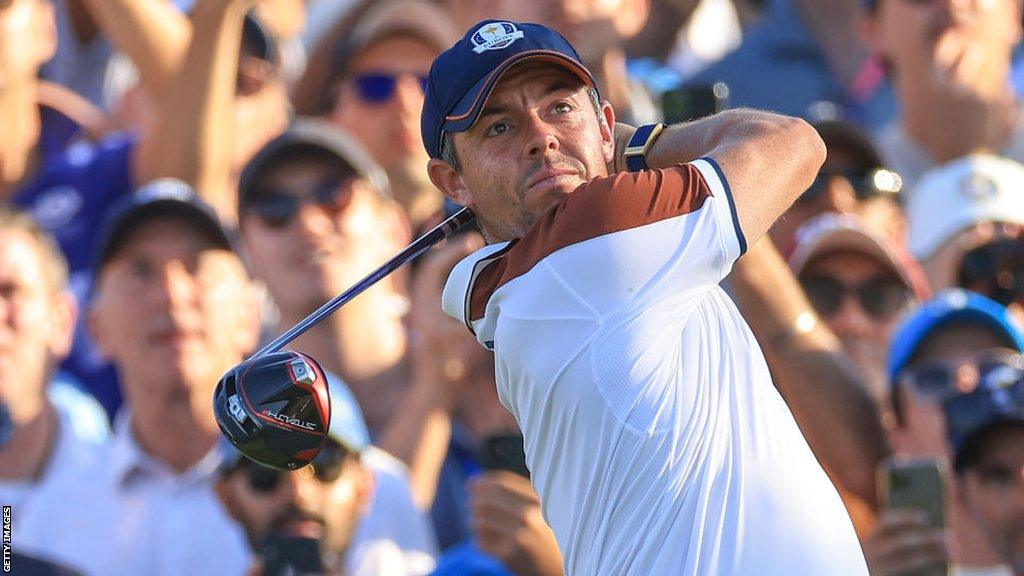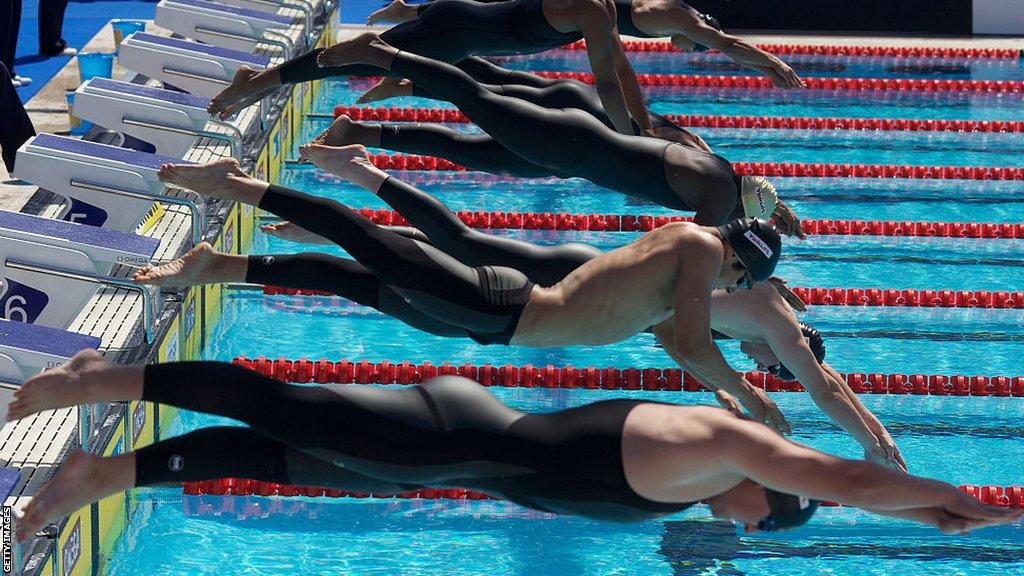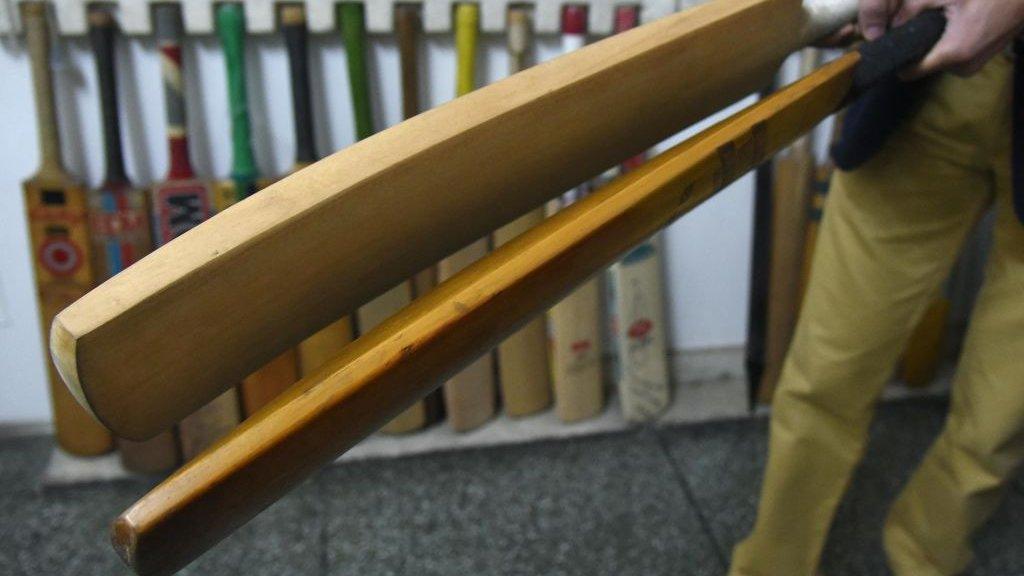Why golf, swimming, and athletics are choosing to limit impact of performance advances
- Published

Rory McIlroy was the biggest hitter on the PGA Tour this season with an average driving distance of 326.3 yards
Golf has become the latest sport to introduce new rules to limit the impact of performance advances by making changes to ball specifications.
The game's top players are facing a reduction of around 15 yards in the distance they can hit tee shots when the measures come into force from 2028.
It means manufacturers are tasked with tweaking ball designs over the next four years to ensure compliance.
Golf now joins join other sports acting to limit performance advances.
Why are golf balls being changed - and how?
"We feel very strongly that we need to act and update the rules for the modern game," R&A chief Martin Slumbers told BBC Sport. But why?
In 2002 only one player - John Daly, with 306 yards - beat the 300-yard drive barrier. Last season, 98 pros beat the circuit's average of 299.9 yards.
This year, the Masters was forced to lengthen Augusta's famous 13th hole from 510 to 545 yards to ensure it remains a challenge.
Golf's ruling bodies decided to limit driver length in 2021 and now it is the distance the ball travels which will be shortened, which can be achieved by altering its composition and dimple patterns in order to affect spin rates.
Balls will have to pass strict testing protocols which determine their Overall Distance Standard.
Once implemented, the likes of Rory McIlroy - among several players on the PGA Tour whose drives average more than 320 yards - will see around 15 yards removed from their longest shots, while recreational golfers who typically generate lower swing speeds will see a reduction of fewer than five yards.
'Super shoes' take over athletics

World records have tumbled over recent years in athletics and the role played by so-called 'super-shoes' - usually featuring a carbon plate in the midsole - have never been far from the conversation.
World Athletics updated their regulations in January 2022, stating shoes could not be used unless they are available to any athlete, while they must also meet technical requirements for the thickness of the sole.
The shoes' impact has been particularly evident in the marathon. This year, Ethiopia's Tigst Assefa smashed the women's world record in Berlin by crossing the line in two hours 11 minutes 53 seconds - taking two minutes and 11 seconds off the previous record - while Kenyan Kelvin Kiptum ran 2:00:35 in Chicago, beating Eliud Kipchoge's previous benchmark by 34 seconds.
Assefa, who only made her marathon debut in March 2022, wore Adidas' £400 Adizero Adios Pro Evo 1 shoes, with Kiptum running in Nike's Alphafly 3. It is those two brands leading the race to provide footwear for the first athlete to break the magic two-hour mark for the 26.2-mile distance.
Hi-tech suits banned in swimming

Swimming banned performance-enhancing swimsuits in January 2010 after their introduction meant almost all of the sport's world records were beaten in under two years.
World swimming's governing body Fina reached the decision after twenty-nine world records were set in the first five days of the 2009 World Championships.
That left only two records still standing from before the arrival of polyurethane suits in 2008.
Speedo's LZR Racer - a 50% polyurethane swimsuit - was among the suits at the forefront of the debate, which left Olympic legend Michael Phelps threatening to withdraw from the 2009 Worlds unless the suits were outlawed.
Bat sizes limited in cricket

Cricket added specific size limitations concerning the edge and depth of bats to the laws of the game in October 2017 following years of debate.
The sport's lawmakers, the Marylebone Cricket Club, decided the game had become "tilted too far in the batsman's favour" and made its first changes to cricket's code of laws since 2000.
With that ruling, bat edges were limited to a maximum 40mm, while bat depths could not exceed 67mm (60mm plus an allowance of 7mm for a possible curve on the face of the bat) and the width no more than 108mm.
Deemed necessary with some mis-hit shots clearing the boundary for six, a bat gauge was used to enforce those restrictions.